The meaning behind the most popular wedding traditions
And they've got a lot to do with the devil!
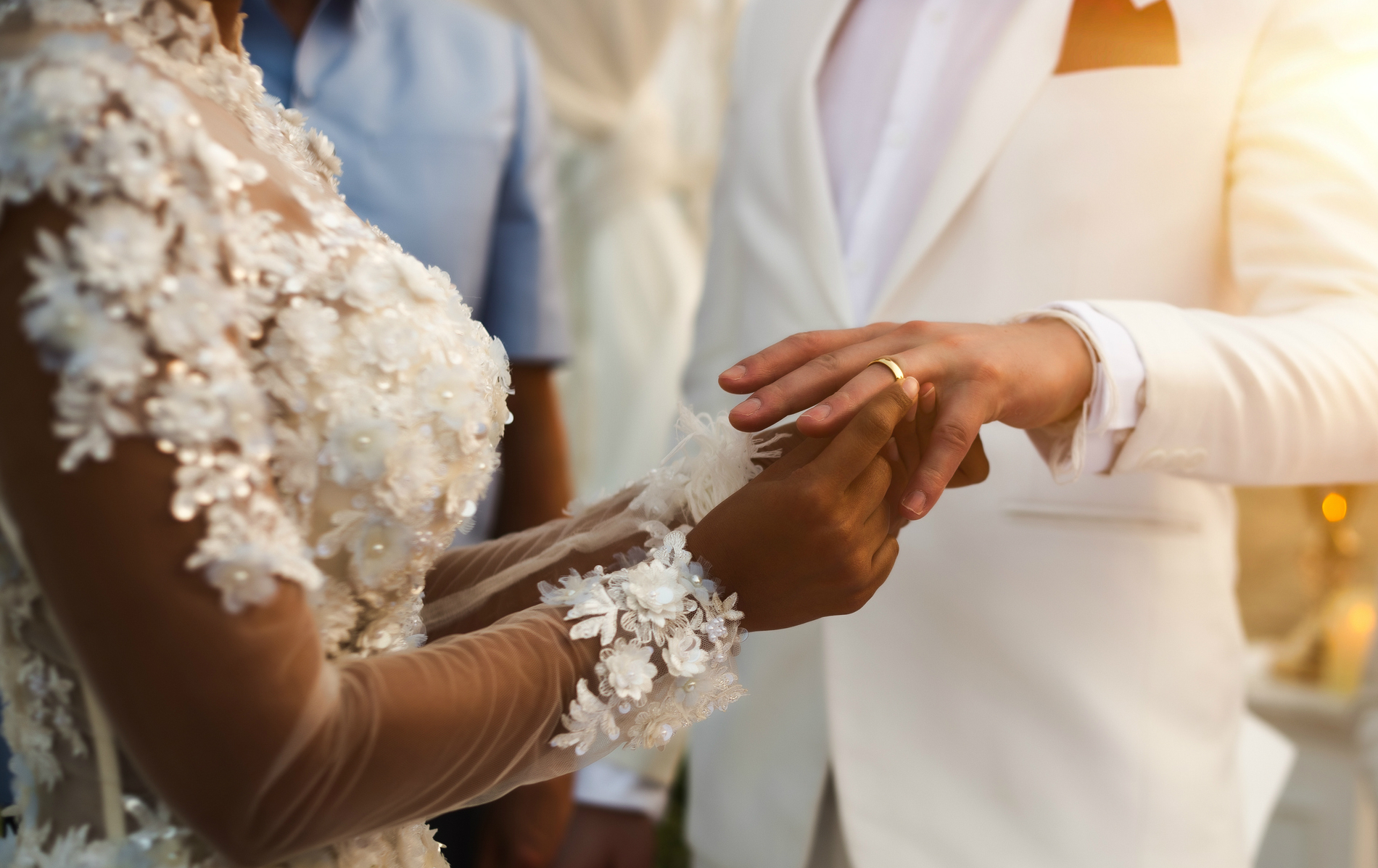

When you get engaged there seem to be so many details to think about for your big day, but have you ever thought about WHY we do so many of the traditional aspects of weddings?
From traditions involving the bride and groom - such as wearing rings on the left hand - to those involving their guests - such as writing wedding cards - there are some weird and wonderful meanings behind our best-loved wedding traditions.
Popular wedding traditions explained:
Why do men propose on one knee?
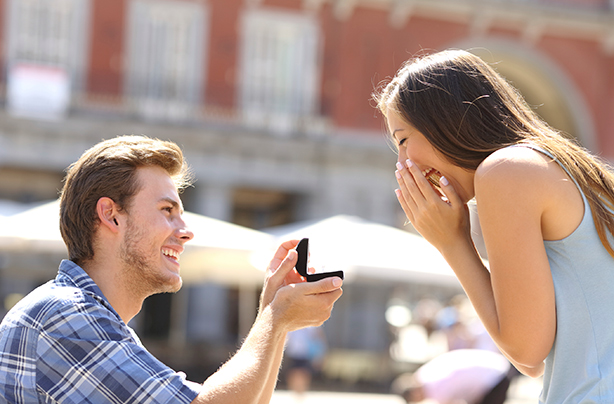
This is one of our favourite wedding traditions. Apparently men get down on one knee to propose in order to symbolise their willingness to submit to their better half's wants and needs. Is there some kind of clause to say they must submit to your want and need to get your hands on a bacon sandwich without leaving bed on a Sunday morning, we wonder? Perhaps something to think about popping in your wedding vows.
Why do we wear engagement rings on our left 'ring' finger?
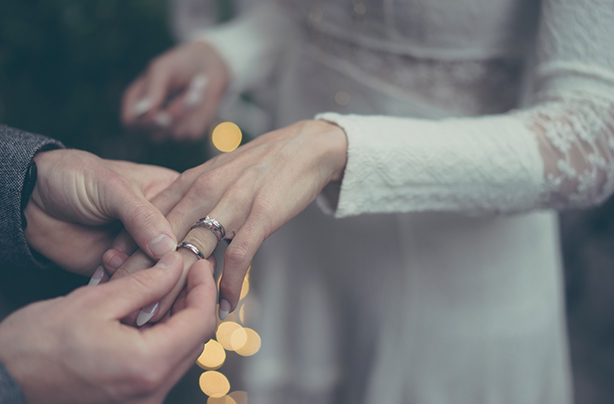
Way back when, people thought that your 'ring finger' contained a vein that led straight to your heart. Fast-forward to modern day and it's also in a handy position to show it off while wrapped around a champagne glass in your Instagram picture. We love timeless wedding traditions! Brace yourself for the likes, ladies.
Why do brides wear white?

It's often batted about that a bride wears white at her wedding to symbolise virginity and purity. As it happens, brides didn't use to even wear white back in the good old days. They just threw on their best dress, whatever the colour. White only came into fashion after Queen Victoria wore it to marry her sweetheart Albert (Side note: Queen Victoria also popularised the Christmas tree. We have a lot to be thankful for).
Why do brides wear wedding veils?

Aside from making you feel claustrophobic and helping you question your attire choices as you walk down the aisle, a veil also has historic symbolism. There are actually a number of ever so slightly concerning reasons women traditionally wore veils . We'll work backwards from worst to not so bad.
Firstly, brides would often wear veils to cover their faces in the cases of arranged marriages – you know, just in case their looks put off their future husband and ruined the deal.
Parenting advice, hot topics, best buys and family finance tips delivered straight to your inbox.
Secondly, veils apparently symbolise ownership. Your dad pops your veil down, your groom throws your veil up. Bish, bash, bosh you've changed hands and now belong to your husband. And you definitely are not your own woman, just in case you're confused.
Thirdly, it's been speculated that brides were to be 'weighed down' by their veil as a preventative measure in case they choose to run away. Because there's nothing sweeter than a bride who's being held hostage.
Why do brides wear a garter for their wedding?
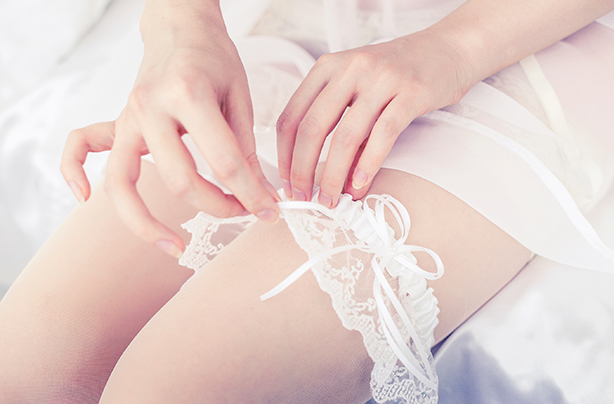
Let's not beat around the bush, garters are weird. Weirder still is the tradition behind them. According to Marriage Customs of the World, 'bridal garters were prized as love tokens with magical properties,' and men would try to yank them off a bride to pin them to their hat for good luck. And suddenly we're thankful for living in 2016.
And why do brides wear 'something borrowed, something blue...'?

Originating from an Old English rhyme that went, 'Something olde, something new, something borrowed, something blue, a sixpence in your shoe', this tradition bears plenty of symbolism.
Something old represents continuity. Something new symbolises optimism for the future. Something borrowed offers borrowed happiness. Something blue stands for purity, love and fidelity. And the final sixpence, which doesn't often get a look-in any more, was meant to represent fortune and prosperity.
Why do brides carry a bouquet of flowers?

It wasn't always peonies and roses you know. Brides during the Victorian years were often bedecked with bouquets of garlic, dill, wheat and ivy. These decidedly unromantic floras were considered as ways to ward off evil spirits with their pungent smells, as well as acting as symbols of fertility.
Why do we have bridesmaids?
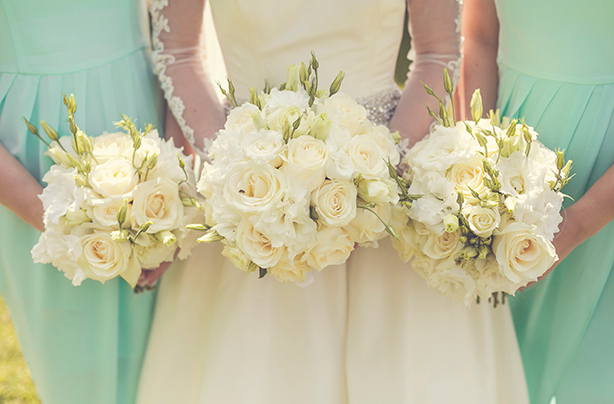
Aside from being the ones to tell you when you're being an insufferable Bridezilla, your bridesmaids are also handy for warding off that pesky devil. You see, bridesmaids were traditionally enlisted to confuse evil spirits or people who wished to harm the bride, by detracting their attention from her.
Why do we throw confetti?
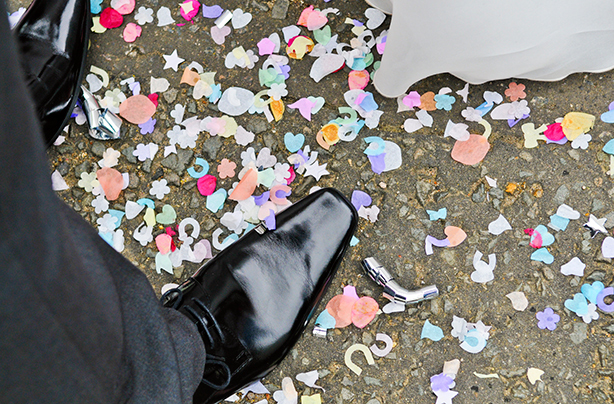
Aside from making sure you get the perfect 'happily married, smiling, covered in confetti' picture at your wedding, confetti is also considered good luck. The tradition originated in Italy and was thought to bestow prosperity and fertility on the newlyweds. And it wasn't always those pretty pastel shapes either. Before paper confetti, people threw flowers, petals, grain or rice.

Rosie is an experienced food and drinks journalist who has spent over a decade writing about restaurants, cookery, and foodie products. Previously Content Editor at Goodto.com and Digital Food Editor on Woman&Home, Rosie is well used to covering everything from food news through to taste tests. Now, as well as heading up the team at SquareMeal - the UK's leading guide to restaurants and bars - she also runs a wedding floristry business in Scotland called Lavender and Rose.